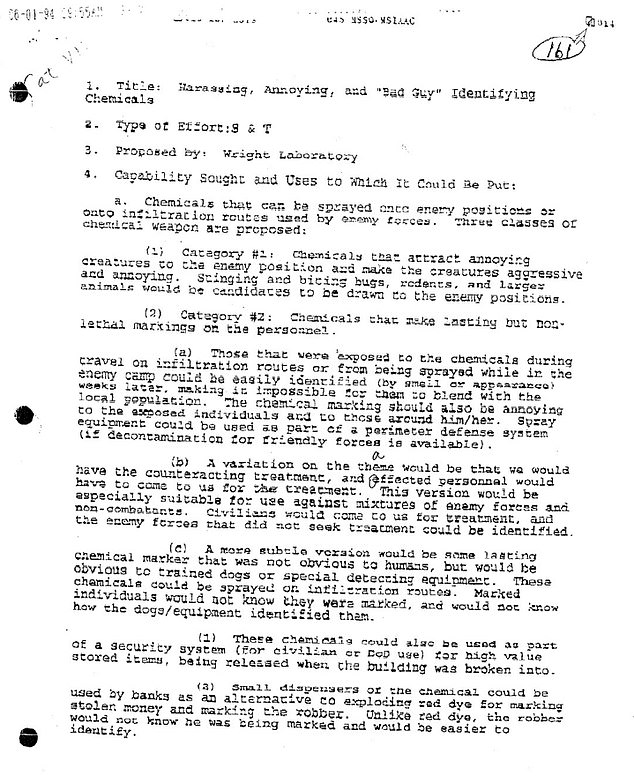
Declassified: Pentagon’s Cold War-Era ‘Gay Bomb’ Proposal for Homophobic Chemical Warfare
Pentagon’s Bizarre “Gay Bomb” Plan Revealed: A Failed Cold War-Era Experiment
By Ellyn Lapointe for DailyMail.com
In a startling revelation, declassified documents show the U.S. Air Force once proposed a “gay bomb” designed to weaponize chemical aphrodisiacs, aiming to make enemy soldiers “irresistibly attractive to one another.” The 1994 plan, developed by the military’s Wright Laboratory, was part of a $7.5 million non-lethal weapons program that included other eccentric ideas like insect-attracting chemicals and “severe bad breath” agents.

Caption: A 1994 proposal outlined a bomb containing aphrodisiacs to cause soldiers to “become gay,” according to documents obtained by the Sunshine Project.
The “Gay Bomb” Concept
The proposal suggested dispersing chemicals to provoke homosexual behavior among enemy troops, theoretically causing unit cohesion to “break down.” Though scientifically baseless, the Pentagon submitted the idea to the National Academy of Sciences for review in 2002. The plan emerged during a period of widespread homophobia in the U.S. military, coinciding with President Bill Clinton’s contentious efforts to lift the ban on LGBTQ+ service members.
Other Unusual Weapon Ideas
The Wright Laboratory’s six-year project included several other unconventional concepts:
- Pest-attracting chemicals to swarm enemies with insects or rodents.
- Skin-sensitizing agents making soldiers vulnerable to sunlight.
- Foul-smelling “markers” to identify adversaries.
- Flatulence-inducing compounds and bad breath agents to demoralize troops.
None of these ideas progressed beyond the planning stage. A Pentagon spokesperson confirmed in 2005 that such proposals are common but rarely pursued.

Caption: The “gay bomb” was intended to disrupt military units through non-lethal means (Stock Image).
Military Context and Backlash
The “gay bomb” proposal reflected the era’s prejudices. Clinton’s 1993 attempt to end the military’s anti-LGBTQ+ policies faced fierce resistance, culminating in the “Don’t Ask, Don’t Tell” compromise. The laboratory’s document acknowledged the concept was “distasteful” but emphasized its non-lethal intent.
Legacy and Modern Non-Lethal Weapons
Though the “gay bomb” was shelved, its creators received the 2007 Ig Nobel Prize, a satirical award for quirky science. The Wright Laboratory later merged into the Air Force Research Laboratory (AFRL), which now focuses on advanced non-lethal technology like Directed Energy Weapons.

Caption: Today, the military develops tools like the Active Denial System, which uses heat beams to disperse crowds (Stock Image).
One such tool, the Active Denial System, uses millimeter waves to create a burning sensation on the skin, compelling targets to flee without injury. While controversial, these technologies highlight the military’s ongoing shift toward minimizing casualties.
The “gay bomb” remains a bizarre footnote in military history—a reminder of how prejudice and pseudoscience once shaped defense strategies.
Word count: 598


